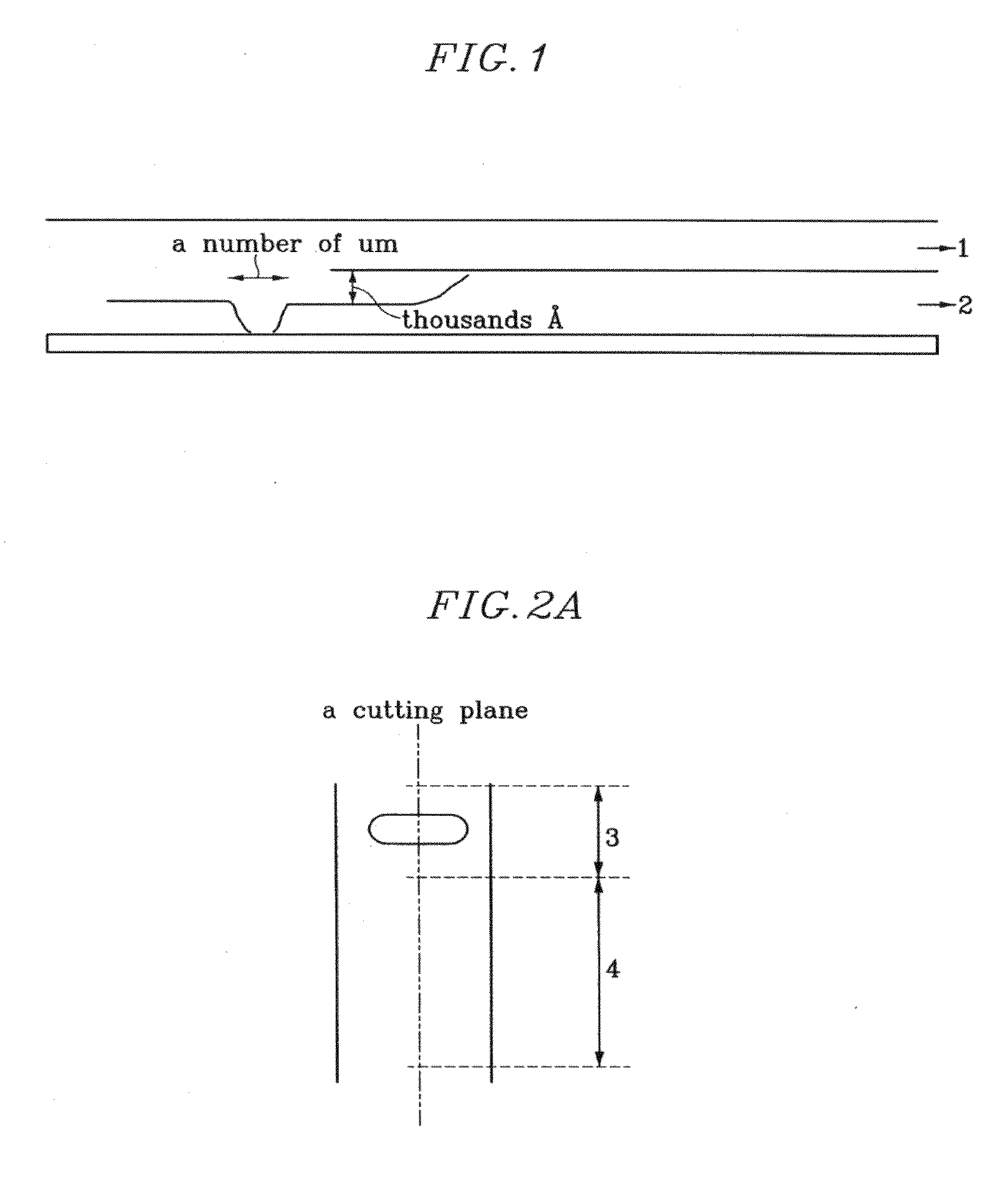Photosensitive resin composition controlling solubility and pattern formation method of double-layer structure using the same
a technology of resin composition and solubility, applied in the direction of photosensitive materials, instruments, photo-taking processes, etc., can solve the problems of insoluble pixels in the developing solution, substantial exposure energy, and light (uv) not fully reaching the lower layer of the coating film, so as to achieve gradual solubility and prevent film breakage
- Summary
- Abstract
- Description
- Claims
- Application Information
AI Technical Summary
Benefits of technology
Problems solved by technology
Method used
Image
Examples
example 1
[0059]A liquid photosensitive composition was prepared by mixing: 20 wt % of a copolymer of styrene / methacrylic acid / butyl methacrylate (copolymerization ratio=60 / 20 / 20; weight-average molecular weight=30,000) as the binder soluble in an alkaline solution (a); 8 wt % of dipentaerythritolhexaacrylate as the crosslinking monomer having at least two ethylene double bonds (b); 20 wt % of C.I. pigment red 254 and 10 wt % of C.I. pigment yellow 139 as the pigment (c); 1 wt % of Irgacure369 (Shiba Specialty Chemical) and 1 wt % of 4,4′-bisdiethylaminobenzophenone as the photopolymerization initiator (d); 0.1 wt % of 3-acryloxypropyltrimethoxysilane (Shin Etsu) as the lower layer hardener (d); and 28 wt % of propyleneglycolmethyl ether acetate and 10 wt % of cyclohexanone as the solvent (f).
example 2
[0060]A photosensitive resin composition was prepared by the same composition and content of Example 1, except that 1 wt % of Irgacure907 (Shiba Specialty Chemical) as the photopolymerization initiator (d) and 0.05 wt % of vinyltriethoxysilane as the lower layer hardener (e) were used.
example 3
[0061]A photosensitive resin composition was prepared by the same composition and content of Example 1, except that 1 wt % of Irgacure369 (Shiba Specialty Chemical) and 1 wt % of isopropylthioxantone as the photopolymerization initiator (d) and 0.2 wt % of 3,4-epoxybutyl methacrylate as the lower layer hardener (e) were used.
PUM
| Property | Measurement | Unit |
|---|---|---|
| Fraction | aaaaa | aaaaa |
Abstract
Description
Claims
Application Information
 Login to View More
Login to View More - R&D
- Intellectual Property
- Life Sciences
- Materials
- Tech Scout
- Unparalleled Data Quality
- Higher Quality Content
- 60% Fewer Hallucinations
Browse by: Latest US Patents, China's latest patents, Technical Efficacy Thesaurus, Application Domain, Technology Topic, Popular Technical Reports.
© 2025 PatSnap. All rights reserved.Legal|Privacy policy|Modern Slavery Act Transparency Statement|Sitemap|About US| Contact US: help@patsnap.com



